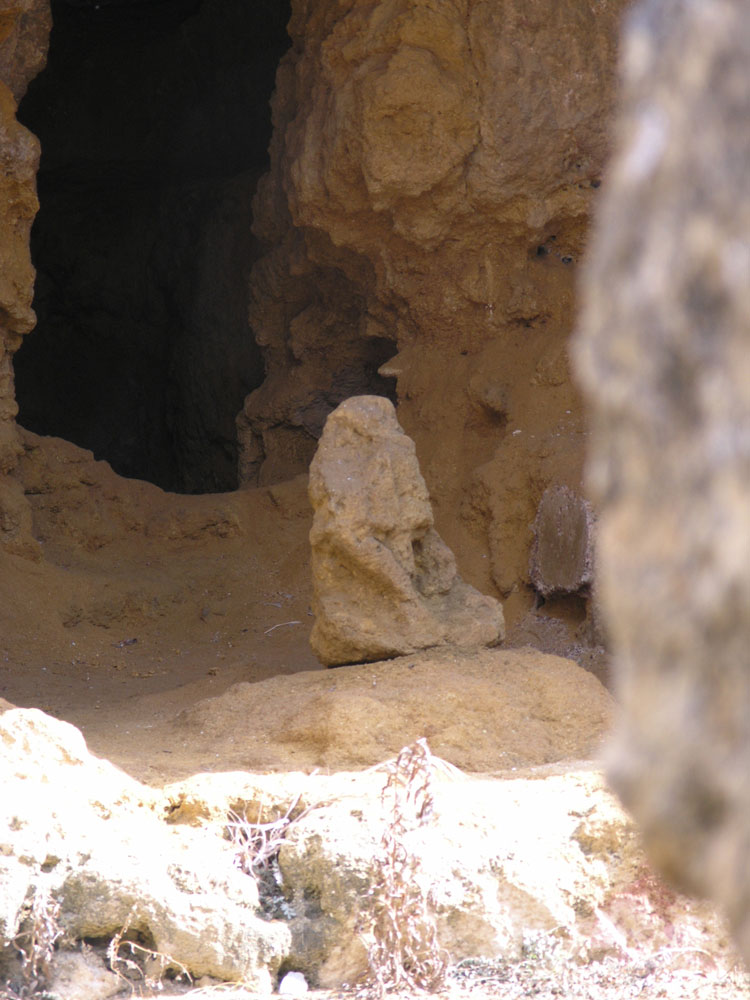Paul McRandle
Stones of the Air
“Un jour une pierre ne tomba pas: on construisit un temple autour d’elle.” (Paul Valéry)
In 2006 I visited the ruins of the Roman necropolis of Carmo outside Seville, drawn there after reading Antonin Artaud’s Heliogabale, which describes in hallucinatory detail Astarte’s fallen star, a meteorite or aerolith known as a “betyl.” Within the necropolis of Carmo rests one of the only surviving sanctuaries dedicated to Cybele and her unfaithful lover Attis, including the betyl sacred to her. To become a Gallus or priest of Cybele involved either self-castration or baptism in the blood of a bull or a ram, for which the sanctuary includes a fossa sanguinaria, a trench in which the bull’s blood drained during the baptismal rite of Taurobolium. The entire space, a square little over 10 meters on each side, had been cut deep into the bedrock rather than constructed.
In Héliogabale ou l’anarchiste couronnée, Antonin Artaud describes a similar temple at Emesus as a filter for human blood. The blood, rather than mixing with impure filth in regular sewers, flows down a narrow spiral into the earth where it is purified by the breath of the gods of Erebus. Artaud suggests the temple forms an inverted pyramid or cone the depths of which correspond to the tip of the phallic betyl above. For the Galli during the high holy days around the Spring equinox would smear the betyl with their blood before washing the stone in the well, the very spot in which archeologists found the betyl of Carmo upon excavation. Throughout the year at various festivals this potent stone would be drawn by cart into the countryside to fertilize the fields.
Artaud conceives of the betyl in terms of the union of contraries—having come from fire they are like “les étincelles carbonisées du feu celeste” (carbonized sparks of celestial fire). On earth they retain the force of the heavens and remain connected to them. Concrete points where heaven and earth, sun and moon, female and male meet, exchange, and transform, they are far from harmonious wholes and contain the heightened, anarchic forces unleashed by opposites colliding.
When discussing the Tower of Babel in L’Art magique Breton and Legrand draw on the tarot, noting the traditional name for The Tower is the House of God or “Beth-el” in Hebrew, the root of the Greek word “betyl.” In the 1425 Italian deck of Charles IV the card lacks the lightning-struck figures that have typically made it an emblem of the punishment of pride. The Tower is fissured but remains intact. “It is in fact a gigantic receptacle of energy, a model of the sanctuary destined to polarize the magical force that lies in thunderstones.”
In this light it seems only fitting that the monoliths of Stonehenge and Avebury stand on the exposed windswept stretches of the Wiltshire Downs and Salisbury Plain, earth and air in extremis.

